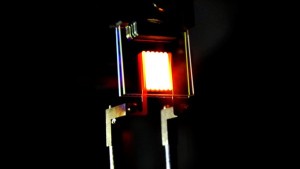Nature, Nanotechnology published a letter pre-announcing research undertaken at MIT by Peter Bermel , Gang Chen, John D. Joannopoulos ,Ivan Celanovic and Marin Solja?i? into producing a highly efficient incandescent light source. The basic principle is using nanotechnology reflectors to return the non visual radiation, specifically IR to the emitting filament that is optimised to reabsorb the energy to emit as light in the visible spectrum.
The experimental solution delivers light at around 3,000K and the technology is predicted to deliver an absolute efficiency close to 40% when developed compared with conventional incandescent at 2% fluorescent between 7% and 13% and LED between 5% and 15%.
The main risk to these developments are regulatory developments particularly in Europe that will limit the ability to market new technologies such as this in the early stages where efficiencies will be lower and prices higher than current LED. As we stand now it is likely that, had we been facing such demanding energy efficiency goals 15 years ago when LED first appeared in the lighting market it is unlikely we would have seen the development expenditure and advances we have seen in the past 15 years. We must avoid a regulatory situation that stunts the growth of new technologies and developments.
Kevan Shaw 12 January 2016
Link to Nature article Nature Nanotechnology 11 Jan 2016


[…] New development could lead to more effective light bulbs Save The Bulb comment on the new bulbs […]